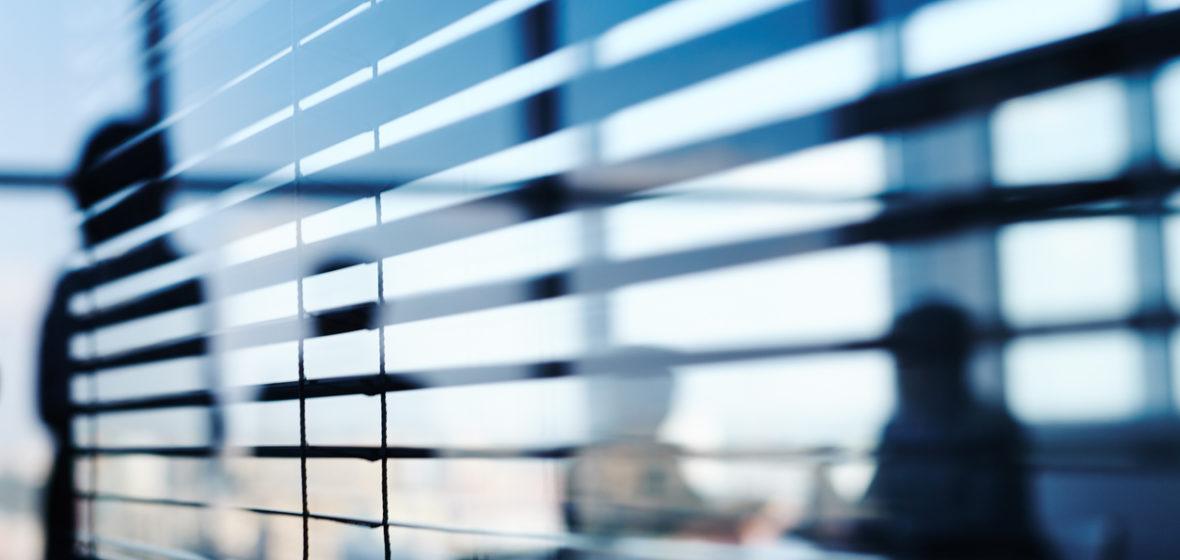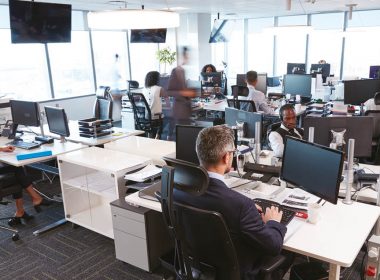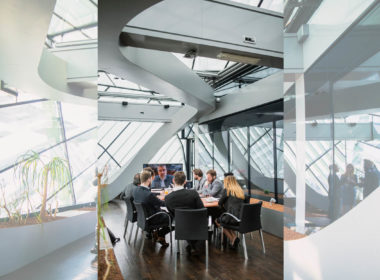Design tips to create a law office environment that's inviting and comfortable for lawyers and clients alike.
We ask an architect and an interior decorator (an ex-lawyer) how a small, modern law office can attract people back to the workplace by addressing wellbeing, inclusivity and productivity, disability access and privacy. They describe how it’s possible to offer spaces that are contemporary without being sterile, and authentic to the personality of the practitioner.
Effective workplace design is both a science and an art, combining the elements of environment, circumstance and available materials to achieve best fit for the people who use it daily – business owners, workers and clients.
The legal office of decades ago – beeping with dial-up modems and cluttered with boxes of printouts – is a relic now. In 2022, functional and aesthetic elements are available to reshape the modern small to medium law firm office.
Sustainability demands the use of materials that are environmentally friendly, ethically sourced, and enable the use of less energy overall. But more pressingly, in the wake of a post-lockdown return to the office, there is the unquestionable need to provide a habitat for workers that feels inviting, appealing to work within, accessible and safe.
Creating a space for legal practitioners requires architectural and style choices that result in a place staff want to work in, sometimes for long hours and under pressure, a place that feels safe and welcoming for a varied clientele. It should offer private, secure areas while remaining open enough to enable conversation and collaboration, as well as accommodate meetings and storage space for secure documents.
There is the unquestionable need to provide a habitat for workers that feels inviting, appealing to work within, accessible and safe.

A versatile space
Fiona Dunin of FMD Architects says a space of 60 to 100 square metres typically meets the needs of a small law practice of four to six in-house staff, allowing that there will be meetings with clients and not all team members will always be present.
For Dunin, the primary concerns are acoustic sealing and clear visuals, including good-quality lighting. She envisions a versatile space with a meeting room that could fit 12, which can be divided via folding or sliding doors into two smaller spaces for gatherings of three or four people. This space should have designated soundproof rooms for confidential phone calls, one-on-one client meetings, and a refuge for workers prone to anxiety, fatigue or chronic pain.
“You need areas of congregation away from the front-of-house meeting spaces, so if there’s a meeting going on, people can still go for lunch or drinks. Having areas to support staff, not just the clients, is very important,” she says. “It builds a culture within the office.”
Folding or sliding doors, Dunin observes, are an ideal alternative to the more costly option of tinted glass panels which can be switched between transparent and opaque, but curtains and blinds could also to turn a larger space into two separate meeting rooms.
“When you’re dealing with a small office, you don’t have the enormous budgets the large legal firms do,” she says. “You want to focus on acoustic and visual separation. Legal firms are getting used to being open plan, but you still need to have distinct meeting spaces so that people coming in aren’t exposed to other people’s paperwork or confidential information. There needs to be a layer of distinction between public space and workspace.”
A beautiful and appealing place
As for enticing workers who have become accustomed to working from home, Dunin believes that it comes down to the opportunity to work within a beautiful and appealing place, especially when working hours are long. This means offering affordable luxuries like natural light, natural ventilation (as opposed to the standard 21 degrees maintained in most commercial buildings by current legislation), plants that are selected and maintained by an expert contractor, and weekly catered group lunches. It may also involve group activities to enhance team rapport and wellbeing.
Dunin explains, “A meeting room space that can open up would enable you to put the tables aside to have a yoga session or a weekly personal trainer. And biophilia, or bringing nature into the design, enables people to feel more connected and calm.”

Professional and stylish
Riddell says that law firms have been late adapters to trends in office design; if she were given the opportunity, she’d be incorporating aspects of residential and hotel interiors into a small law office. The alternative is a sterile space that alienates staff and visitors.
“I went into a suburban firm not long ago and the reception area was all white walls; everything was white and grey. It had those daggy waiting room chairs. I think you can be more creative with colour and have that level of seriousness and professionalism while still being stylish. They’re not mutually exclusive.”
Riddell isn’t suggesting anything radical.
“When you think of a traditional law firm, you think of those leather Chesterfield sofas. Maybe you could play on that idea but make it more contemporary. You could use more contemporary leather furnishings or introduce colour through blue walls for a calming effect. Instead of office furniture, perhaps you buy furnishings designed for hotels or residential. It’s about thinking outside the box.”
The idea of bringing hotel features into the law firm is based on finding a balance between professionalism and comfort.
You can have that level of seriousness and professionalism while still being stylish. They’re not mutually exclusive.
“That hotel influence makes it more sophisticated,” Riddell asserts. “You want to make sure that clients, who go to lawyers for so many different reasons, don’t feel that they’re entering a space that feels sterile and scary.”
After working as a lawyer for two decades, Katie Riddell has had an interior decorating business for the past six years. She attests that natural light, natural ventilation and plants within the office space make an enormous difference to how appealing and inviting a legal workplace is.
Riddell recalls, “In some of the contract roles I had, where it was hot-desking and open plan, you had to get into the office early to get near a window.”
Where natural light is not available to all workers equally, as is often the case in high-rise commercial buildings, Dunin recommends a diversity of lighting types: “Good task lighting in the workspace, but a more domestic feel, or a softer, warmer lighting in the break-out spaces and the kitchen spaces, giving a more relaxed feel.”
Accessible for all
Both Dunin and Riddell emphasise the role of contrasting colours and textures to enable those with vision impairment to delineate between doors, stairways, meeting rooms, kitchens and bathrooms.
“You need clear signage on every meeting room and toilet,” Riddell notes, “including braille, and you could use directional things like tactile tiles for when you’re nearing stairs. For those with hearing impairments, you’d want to ensure that spaces don’t reverberate acoustically.”
Riddell adds, “Obviously, having enough space and furniture that can be moved is important for those in wheelchairs, and allowing for customised, ergonomic seating. These days, you also want to have spaces that allow for guide dogs or companion dogs within the office space.”




